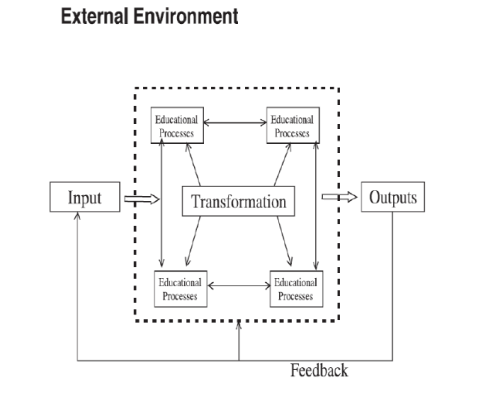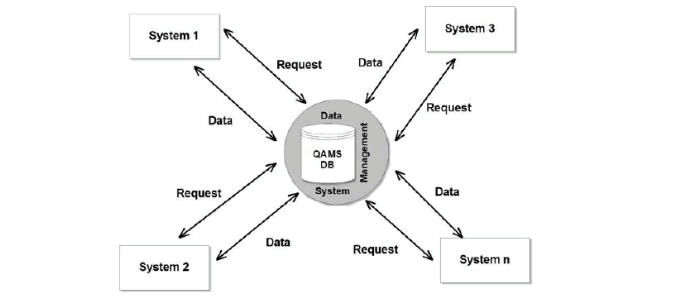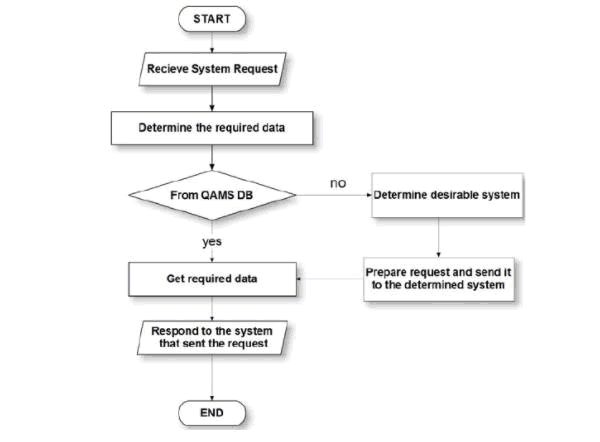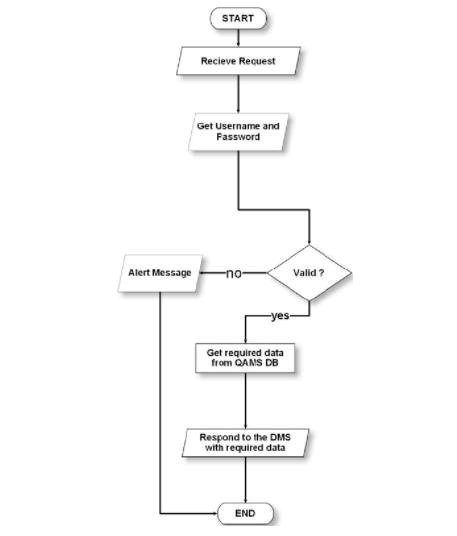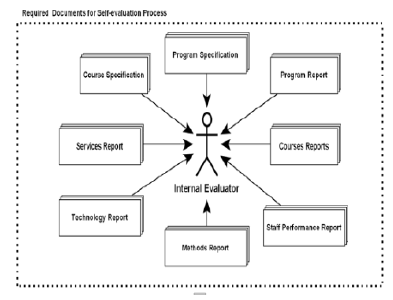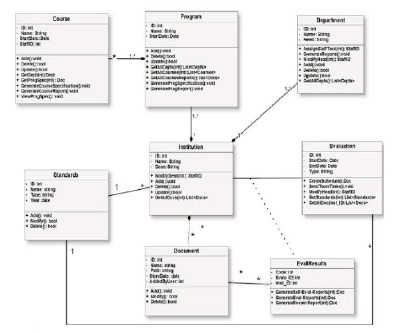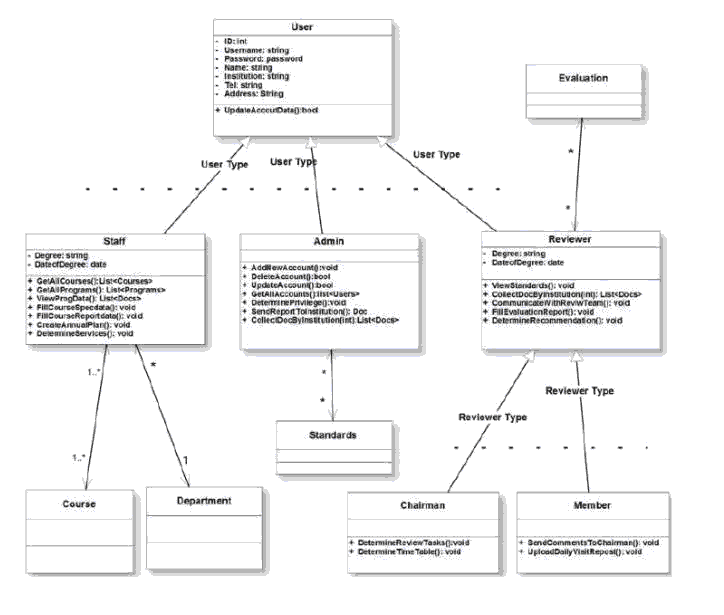Research Article: 2022 Vol: 25 Issue: 6S
Intelligent Systems to Measure the Quality of Assessments in Higher Education
Biju Theruvil Sayed, Dhofar University
Mukesh Madanan, Dhofar University
Nihal Biju, EDataInferno Research and Innovations Private Limited
Citation Information: Sayed, B.T., Madanan, M., & Biju, N. (2022). Intelligent systems to measure the quality of assessments in higher education. Journal of Management Information and Decision Sciences, 25(S6), 1-11.
Keywords
Assessments, Higher Education, Intelligent Systems, Quality of Assessments
Abstract
This paper sheds light on intelligent systems and their effect on quality education. The research deals with the implementation of intelligent systems in schools and how they affect the quality of education imparted at various institutions. Further an architecture for intelligent systems is proposed and the evaluation stages are discussed along with the implementation of the model. The paper concludes by stating how these systems could be extremely advantageous for the education of children and how future research can be conducted on this topic.
Introduction
In various fields, Quality Assurance (QA) has undergone changes in recent years. To ensure quality in higher education, there are a number of requirements to be followed, including agreements, procedures, and systems for managing and improving the quality of education, among other things. Creating knowledge management systems is considered to be a vital area (Sayed, Jabeur & Aref, 2009). Although there are many attempts to define and define these requirements, the concepts of quality assurance are relatively simple and constitute an important constraint when using them in a high-quality data system (Alokluk, 2018). The reason for this is that the principles and requirements of QA in a tertiary institution are very different from those in other tertiary institutions. A set of concepts is defined in this work to remove the ambiguity created by the complexity of concepts and terms used in the field of quality assurance in higher education. As a result, the first step is to see the quality of education as a complex set of many elements. In the process of designing, implementing, evaluating and developing education and teaching, a large proportion of the steps involved in ensuring the quality of higher education take place in sectors and departments. The university strategic plan and the program of teaching and academic growth identifies the first points of education (Alsharari, 2018). The solution for university management, strategic planning, and performance management all includes assessment of educational and developmental measures, as well as evaluation of the achievement of established goals. Any program cannot be built without first understanding its key components and the relationships between them, according to software developers. The outcomes of each program, inputs, construction requirements, and production purpose must all be understood. Some authors prefer to create high quality modules based on their most pressing needs. However, they may eventually provide internal quality assurance system infrastructure if they receive additional information (QAS). This infrastructure has been introduced as a comprehensive framework that is currently being built to accommodate a wide range of facilities (Aparicio et al., 2018). A KMS involves typically capturing, organising and storing information (Sayed, Jabeur & Aref, 2009). There are 18 sub-systems in the proposed system. Each sub-system is an independent module that performs a specific set of functions. The infrastructure module is the most basic, and is well researched, designed, and used in this article. These modules are analysed and implemented using Unified Modelling Language (UML), a standard programming language that makes it easy for any module to be developed and integrated with the infrastructure over time. The aim of this paper is to implement intelligent information architecture further improve the quality of higher education.
Literature Review
Aside from the way that there is an immense measure of research for quality confirmation in advanced education, a couple of pointers use it adequately as a product device. In any case, since they centre around explicit cycles like quality audits, courses and program determinations, or the student survey measure, current frameworks are not viewed as a total quality affirmation framework (Alharthi et al., 2017). What's more, they will require more work to turn into a completely mechanized framework. ENU QAS is another program. ENU QAS means "European University Quality Assurance System." It has been presented by ENU as a QAS structure for any apparent European college. The premise of this methodology is quality control in open perusing and e-learning (ODL) (Linde & Petrova, 2018). The investigation was presented by an online quality affirmation and assessment framework. This program, then again, looks to give answers for framework client inquiries through robotized web search. It tends to be shown as a quality information mining program (Badran, Baydoun & Hillman, 2019). QAS, as indicated by ENU, is comprised of strategies, perspectives, practices, and cycles that guarantee quality is kept up with and improved (Jabeur, Zeadally & Sayed (2013). Courses, certifications offered, study content, innovation, learning methodologies, and administrations are on the whole under QAS. One of the significant shortcomings of the framework is that it depends vigorously on quality administration in e-ODL, which implies that the e-ODL character is intensely impacted by the overall instructive climate at numerous colleges (Alharthi, et al., 2017). The Al Farabi program is the Web use of the quality administration framework right now being used at Mansoura University in Egypt. This program is straight forwardly open (Cavanagh et al., 2020).
The framework, however, is now a web-based framework for creating and compiling historical archives and information identified through the board quality assurance. The Egyptian National Authority for Quality Assurance and Accreditation Education (NAQAAE) was established in 2008 (Aparicio et al., 2018). With all the rules and guidelines pertaining to the type of school, this organization acts as the governing body, compared to the framework used at Mansoura University, NAQAAE is much larger and more comprehensive (Cavanagh et al., 2020). Also, this program includes a test cycle. The program has a large module for quality inspectors and analysts. This module contains all levels and test assignments. In any case, among the members in the survey collaboration, this program is considered the planning manager. In addition, the organization goes a long way in collecting active archives to create the highest annual report (Nosenko, Popel & Shyshkina, 2019). The design guidelines have gained accreditation as a measure of quality control. ABET introduced another quality assurance and accreditation process. Since then it has been used in many tall testing centres in school construction in the United States. The basic results of this test are empowering, and at a further stage, the accreditation cycle should continue (Gerasimova, Romanova & Zhenova (2018). Further evaluation is offered to take into account inconsistencies in opinion and meet with three Canadian colleges regarding US accreditation. In addition, the creator has provided new programs to address the educational quality cycle. This product, too, is only designed by the Stevens Institute of Technology to talk about motivation, the education system, framework tests, key prevention, and current outcomes. It is also viewed as an example of the capabilities of a real digital design system.
An alternative approach was proposed, with the aim of assessing the impact of value propositions on the fulfilment, image of the institution, and reliability of Malaysian public universities (Gerasimova, Romanova & Zhenova (2018). Other global offerings are offered to ensure the quality of computer training content that is best suited for adult education. This model captures the ISO/IEC 9126 quality system and incorporates adult learning ideas. Finally, a positive picture of the e-assessment of higher education in research has been presented (González-Zamar et al., 2020). In view of this, each program can be seen as a task to promote a clever knowledge framework to address the level of quality assurance in higher education. There is no integrated data planning framework in higher education institutions that deals with all aspects of quality assurance management. Therefore, our proposed system utilizes the use of the framework of the previous framework while at the same time adding new skills that are currently not available to improve the quality assurance of the board cycle in higher education institutions. 'Q&S quality assurance' 'is the name of the proposed framework (Khouja et al., 2018).
Proposed Framework
Advanced educational institutions have a sub-framework, sub-transformation and sub-charter. As open structures, they are highly dependent on the weather or external forces which is why the foundation of higher education equally depends on a stable and flexible environment (Sayed, Al Mushikhi & Dhanasekaran, 2019). As it were, we misuse the relationship between the educational framework and the real framework in terms of thermodynamic perspective. Open-ended thermodynamics in the natural sciences look at a few influential values of the real framework ('open' in physical science suggests that there is a power exchange, which in the current parallel is considered data content) and there is a possibility that the framework could reach a 'strong' consensus. In our case, we can view 'entropy' as a constant stream of yield. Figure 1 shows a graph of the structure that can be used in any teaching environment. The data sources of the framework are HR (these two subjects and teachers), real assets up to the basics and funding. In addition, the educational and exercise cycles are identified through the education system, management and resources from the lower transformation framework. We can honour the acquisition of the framework as unemployed students, the development of knowledge through the distribution of research and the World Economic Forum, among others.
The Proposed Architecture
Every subsystem is responsible for many things and can be combined with various modules to play the required role with the overall framework (Medina, 2018). The programs below can share and trade information and reports to assist their clients in fulfilling their obligations. The design of the component of these modules is discussed as follows:
The information management framework (DMS) responds by providing the necessary information for all sub-programs. The DMS is considered a link between all the pieces of the framework as shown in Figure 3 (Aldowah, 2017). The DMS and other frameworks may require information from each other. After this data processing, it will be returned to the required framework (Aldowah, 2017). The DMS flow chart is shown in Figure 4. In Figure 2, the DMS acquires an outline request framework for a few details.
The DMS will then, at the same time, determine the details specified. In the QAMS database, find another source. After that, at that point, the DMS will retrieve the required information and send it back to the framework (Nosenko, Popel & Shyshkina, 2019).
The information management framework (DCS) is responsible for the authorization, validation and security measures of the framework (Sorour, 2019). As such, it is accounted for with regard to record details, authorizations and institutional details. The DCS system is shown in Figure 5 and the guard flowchart in Figure 6.
Management plan (PMS) responds by addressing project details within the institution. This information includes program details and program reports (Yassin, 2020). The PMS input is for the organization's purpose, vision, key arrangements and other additional records. Sources of information similarly address the needs of the community.
There is a quick connection between PMS and CMS (Medina, 2018). These two frameworks address the basis of any improved academic achievement. PMS also collaborates with DCS to monitor program downtime and program reports.
The framework finds customer demand. Thereafter, at that point, it determines the proposed activity required by the client, i.e., program details, or program report. In both cases, the framework will determine the time frame for doing what you need. If the decision period is not reached in time, the PMS will liaise with the various agencies to collect the required information, for example, study reports and separate records. This information will be shared to make the required report (Petkovics, 2018).
Data Analysis and Implementation
The Quality Evaluation Process and its Process of Working
In line with quality enhancement, higher education institutions must evaluate themselves, which is the first step in the evaluation process. The next phase is an external assessment, which includes a visit to an external audit commission that provides a recommendation report. The last step forward is to check/visit a friend's visit, as we will check now. This section will handle the full investigation of the entire testing cycle. Also, we will know who the examiner will be in each category. The records and reports required by the inspector will be provided during the full treatment of the institution. In addition, we will be welcomed in the basic sections of the final report prepared by the external audit board of trustees. In addition, internal reports and records will be repeated. The evaluation cycle is one of the most complex cycles facing higher education institutions during the quality assurance of board interaction. This interaction test is led into three phases, to clarify: 1 self-assessment 2 external testing 3 peer reviewer test. In each category there are different approaches and methods. And there is a need for various repositories for these categories. The proposed framework makes these reports and their evaluations accessible at any time. That, however, this framework further provides the inspector naturally with the proposed report of the expected institutional execution (Osadcha et al., 2020).
Self-Evaluation Stage
Self-assessment begins at least at unit level (e.g., office of experts) and rises to the top of the college progression program (Osadcha et al., 2020). At each level, the unit is required to honestly and reliably evaluate its cycles in all quality indicators. This level of 'self-examination' was pure, meaning that it could not be suggested that we 'point fingers' but that we know the merits, shortcomings, accomplishments, or downgrades of something (Badran, 2019). The self-assessment report requires an annual exercise investigation into the establishment of three regions comprised of basic equipment, educational projects, research and other course movements and placement (Pedro, Leitão & Alves, 2019). The test cycle incorporates a basic concept and function. In all three regions, the assessment should reflect the previous year's academic exams compared to those that were prepared for that year to address the objective statement. A number of career plans should be attracted to directing the exams for the coming academic year.
The planned result of the self-assessment rate is the 'annual self-assessment report'. This report has its own organization as indicated by QAAP (Pedro, Leitão & Alves, 2019).
The components of this report as set out in Figure 7 are: preamble, purpose, vision, management and organization, personnel, educational projects, academic guidelines, form of learning openness, quality management, research and other educational exercises, local organization, integrated construction programs and proposal for development and ideas (Sayed, 2019).
External Evaluator
The next step is to link to external testing, which includes a visit to an external testing commission that provides feedback on recommendations. Persons from the external inspection commission are assured that people are not at all prepared to carry out inspection orders in accordance with clear rules (Petkovics, 2018). The assignments of the external audit commission will be: to define the content of the self-assessment report, to visit the foundation of higher education, which is the basis for external assessment and to make a report on the recommendations. A dialogue between the examiners and the tested basis must be obtained.
The external examiner is a person with external expertise in the field of professionalism who is required to assess the design and content of the program, most importantly for ILOs, the principles and appropriateness of student assessment and to achieve detailed data and assessment of current learning materials (Proskura & Lytvynova, 2020). The foundation responds by showing the work of the inspectors and naming them. This talks about the connection between the internal test rating and the external test rating. The external auditor will require all audit-related records and the annual self-assessment report of the institution. The basic reason for this cycle is to create a report that contains all the comments and notes on the establishment process before the start of the peer audit phase.
Peer Review Process
Peer review research is at the forefront of evaluating recommendations, evaluating, extracting words, replacing comprehension, planning, approval steps and decisions related to a particular job. In self-assessment, the foundations and projects that undertake self-assessment of their academic performance and management are based on guidelines set by the accredited organization (Proskura & Lytvynova, 2020). A peer review poll is a communication that draws on schools and directors without a foundation or system as open members to the idea of these same activities (Sayed, 2021). These interactions include the self-assessment tests mentioned above such as site visits to a building or system.
The yield of a peer review who sees the scale is the last evaluation test report. It is also called a review report'. Audit report, especially construction is for the organisation. This report is expected to provide an overview of the basic plan (s), identifying attributes and issues that need to be addressed before authorization visits. It provides the basis for a plan for further development, although there is an obligation for the organization to stabilize the work required, its needs and how to deal with known needs. The Review Report should be analysed and its decisions based on evidence (Shen & Ho, 2020). The Review Report likewise has to think, prepare and produce. Lucidity is important. Generally, test reports of this type should provide a point for each, then, at the same time, supporting the evidence for any discussion. The description of the review areas of the Review Report should be kept in the required place so that the hard worker understands the test and the supporting evidence.
Implementation
In the execution phase, QAMS requirements are converted into draft source codes (Shen & Ho, 2020). The purpose of this section is to perform QAMS accurately and effectively on a specific set or range of PCs, using specific apparatus and regional language. The reason for the QAMS assassination can be summarized as follows: making the framework accessible to a higher education organization Participants and access to ongoing support and framework support within the institution (transformation). Flow chart, movement chart, sequence graph and phase framework are recorded to capture the ingenuity of formulating the proposed framework. The inspector will be associated with the proposed organizational evaluation framework. The research interface module will collect the required test cycle information such as test procedures and test team information. The control display module will set organizational details (Tri, Hoang & Dung, 2021). This information will be collected through program modules, courses and staff. The end result of this interaction is a test report that will be returned to the inspector. By definition, a section framework is a graph showing the interdependence of classes and assemblies, along with integrated efforts and connections between classes and meeting places. The proposed framework section is shown in Figure 8 and Figure 9. The proposed framework consists of the following classes: client, staff, analyst, representative, manager, section, academic year, archive, program, course, general self-examination, auditing, classification, establishment, results testing and evaluation.
Conclusion and Future Work
In this commitment, the internal quality assurance of the board cycle and the complete structure of the proposed interaction were introduced. A data framework based on that structure is proposed. This data framework consists of an institutional module and 17 sub-modules. The idea of building another data framework maintains a range of strategies from the damage to the learned frameworks and the benefits from their compliance. The attributes and components of part of these sub-modules are assessed. A point-by-point evaluation and partial strategy for those sub-modules has been developed (Sayed, 2021). All past research and institutional module programs or subs-modules are based on planning ideas. All tests and configurations are completed using the standard UML system display language, too. The proposed data framework can collect and process information and data, which helps the internal QAS in the establishment, to become a unique alternative to the work and functioning of the organization. This will help all participants to make and test their promises. We will automatically subtract the full zero in this cycle. For complete automation we suggest that every partner will have the option to play his or her job and obtain any required data in a single summary.
References
Aldowah, H., Rehman, S.U., Ghazal, S., & Umar, I.N. (2017). Internet of things in higher education: A study on future learning. Journal of Physics: Conference Series, 892(1), 012-017.
Google Scholar, Crossref, Indexed at
Alharthi, A., Wills, G., Alassafi, M., Walters, R., & Alzahrani, A. (2017). Critical success factors for cloud migration in higher education institutions: A conceptual framework. Int. J. Intell. Comput. Res. (IJICR), 8(1) 817-825.
Google Scholar, Crossref, Indexed at
Alokluk, J.A. (2018). The effectiveness of Blackboard system, uses and limitations in information management. Intelligent Information Management, 10(06), 133.
Google Scholar, Crossref, Indexed at
Alsharari, N.M. (2018). Internationalization of the higher education system: An interpretive analysis. International Journal of Educational Management. 32(3), 359-381.
Google Scholar, Crossref, Indexed at
Aparicio, F., Morales-Botello, M.L., Rubio, M., Hernando, A., Muñoz, R., López-Fernández, H., … & Gachet, D. (2018). Perceptions of the use of intelligent information access systems in university level active learning activities among teachers of biomedical subjects. International journal of medical informatics, 112, 21-33.
Google Scholar, Crossref, Indexed at
Badran, A., Baydoun, E., & Hillman, J.R. eds., (2019). Major challenges facing higher education in the Arab world. Quality assurance and relevance, 382. Springer.
Google Scholar, Crossref, Indexed at
Cavanagh, T., Chen, B., Lahcen, R.A.M., & Paradiso, J.R. (2020). Constructing a design framework and pedagogical approach for adaptive learning in higher education. A practitioner's perspective, international review of research in open and distributed learning, 21(1), 173-197.
Google Scholar, Crossref, Indexed at
Gerasimova, V.G., Romanova, Y.D., & Zhenova, N.A. (2018). Russian market of LMS for higher education. Astra Salvensis, 6(2), 757.
González-Zamar, M.D., Abad-Segura, E., López-Meneses, E., & Gómez-Galán, J. (2020). Managing ICT for sustainable education: Research analysis in the context of higher education. Sustainability, 12(19), 8254.
Jephcote, C., Medland, E., & Lygo-Baker, S. (2021). Grade inflation versus grade improvement: Are our students getting more intelligent?Assessment & Evaluation in Higher Education, 46(4) 547-571.
Google Scholar, Crossref, Indexed at,
Jabeur, N., Zeadally, S., & Sayed, B. (2013). Mobile social networking applications. Communications of the ACM, 56(3), 71-79.
Khouja, M., Rodriguez, I.B., Halima, Y.B., & Moalla, S. (2018). IT governance in higher education institutions: A systematic literature review. International Journal of Human Capital and Information Technology Professionals (IJHCITP), 9(2) 52-67.
Kurniadi, D., Abdurachman, E., Warnars, H.L.H.S., & Suparta, W. (2019). A proposed framework in an intelligent recommender system for the college student. Journal of Physics: Conference Series, 1402(6), 066-100. IOP Publishing
Linde, I., & Petrova, M. (2018). The challenges of formalization and modeling of higher education institutions in the 21st century. CBU International Conference Proceedings, 6, 303-308.
Medina, L.C. (2018). Blended learning: Deficits and prospects in higher education. Australasian Journal of Educational Technology, 34(1) 42-56.
Nazari-Shirkouhi, S., Mousakhani, S., Tavakoli, M., Dalvand, M.R., Šaparauskas, J., & Antuchevi?ien?, J. (2020). Importance-performance analysis based balanced scorecard for performance evaluation in higher education institutions: An integrated fuzzy approach. Journal of Business Economics and Management, 21(3) 647-678.
Nosenko, Y.H., Popel, M.V., & Shyshkina, M.P. (2019). The state of the art and perspectives of using adaptive cloud-based learning systems in higher education pedagogical institutions (the scope of Ukraine), journal, 2433, 173-183.
Google Scholar, Crossref, Indexed at
Osadcha, K., Osadchyi, V., Semerikov, S., Chemerys, H., & Chorna, A. (2020). The review of the adaptive learning systems for the formation of individual educational trajectory. CEUR Workshop Proceedings, Journal 2732.
Pedro, E., Leitão, J., & Alves, H. (2019). The intellectual capital of higher education institutions: Operationalizing measurement through a strategic prospective lens. Journal of Intellectual Capital.
Petkovics, I. (2018). Digital transformation in higher education. Journal of Applied Technical and Educational Sciences, 8(4),77-89.
Proskura, S.L., & Lytvynova, S.H. (2020). The approaches to Web-based education of computer science bachelors in higher education institutions.
Shen, C.W., & Ho, J.T. (2020). Technology-enhanced learning in higher education: A bibliometric analysis with latent Indexed at approach. Computers in Human Behavior, Journal 104, 106-177.
Sorour, A., Atkins, A.S., Stanier, C.F., & Alharbi, F.D. (2019). The role of business intelligence and analytics in higher education quality: A proposed architecture. International Conference on Advances in the Emerging Computing Technologies (AECT), 1-6, IEEE (2020).
Sayed, B.T., Jabeur, N., & Aref, M. (2009). An archetype to sustain knowledge management systems through intranet. International Journal of Social Sciences, 4(4), 228-232.
Sayed, B.T., Al Mushikhi, K.M., & Dhanasekaran, B. (2019). Knowledge based information system to manage transfer of credits in an outcome based higher educational setting. Procedia Computer Science, 154, 26-32.
Sayed, B.T. (2021). Application of expert systems or decision-making systems in the field of education. Journal of Contemporary Issues in Business and Government, 27(3) 1176-1185.
Tjahjadi, B., Soewarno, N., Astri, E., & Hariyati, H. (2019). Does intellectual capital matter in performance management system-organizational performance relationship? Experience of higher education institutions in Indonesia. Journal of intellectual capital,
Tri, N.M., Hoang, P.D., & Dung, N.T. (2021). Impact of the industrial revolution 4.0 on higher education in Vietnam: Challenges and opportunities. Linguistics and Culture Review, 5(S3) 1-15.
Yassin, A.A., Abdul Razak, N., Qasem, Y.A., & Saeed Mohammed, M.A. (2020). Intercultural learning challenges affecting international students’ sustainable learning in Malaysian higher education institutions. Sustainability, 12(18), 7490.
Zagorodnya, A., Dichek, N., Chobitko, N., Voznyk, M., Honchar, L., & Petrova, M. (2020). Professional training of the economic sector specialists at higher education institutions of the Republic of Poland and Ukraine: Criteria of Comparison. International Journal of Higher Education, 9(3), 139-144.
Zawacki-Richter, O., Marín, V.I., Bond, M., & Gouverneur, F. (2019). Systematic review of research on artificial intelligence applications in higher education–where are the educators?,International Journal of Educational Technology in Higher Education, 16(1) 1-27.
Google Scholar, Crossref, Indexed at
Received: 14-Mar-2022, Manuscript No. JMIDS-22-11050; Editor assigned: 16-Mar-2022, PreQC No. JMIDS-22-11050(PQ); Reviewed: 26-Mar-2022, QC No. JMIDS-22-11050; Revised: 07-Apr-2022, Manuscript No. JMIDS-22-11050(R); Published: 14-Apr-2022
